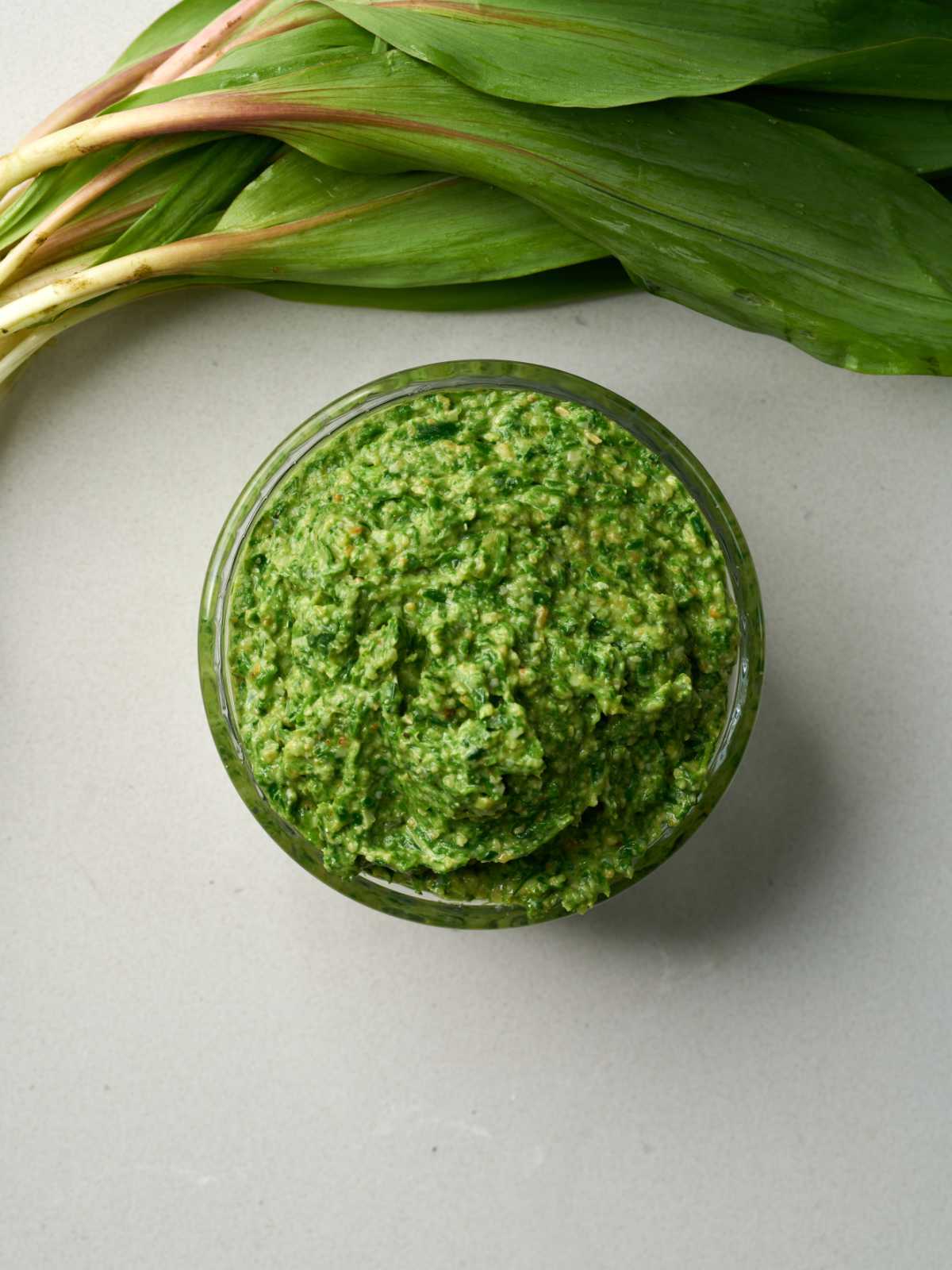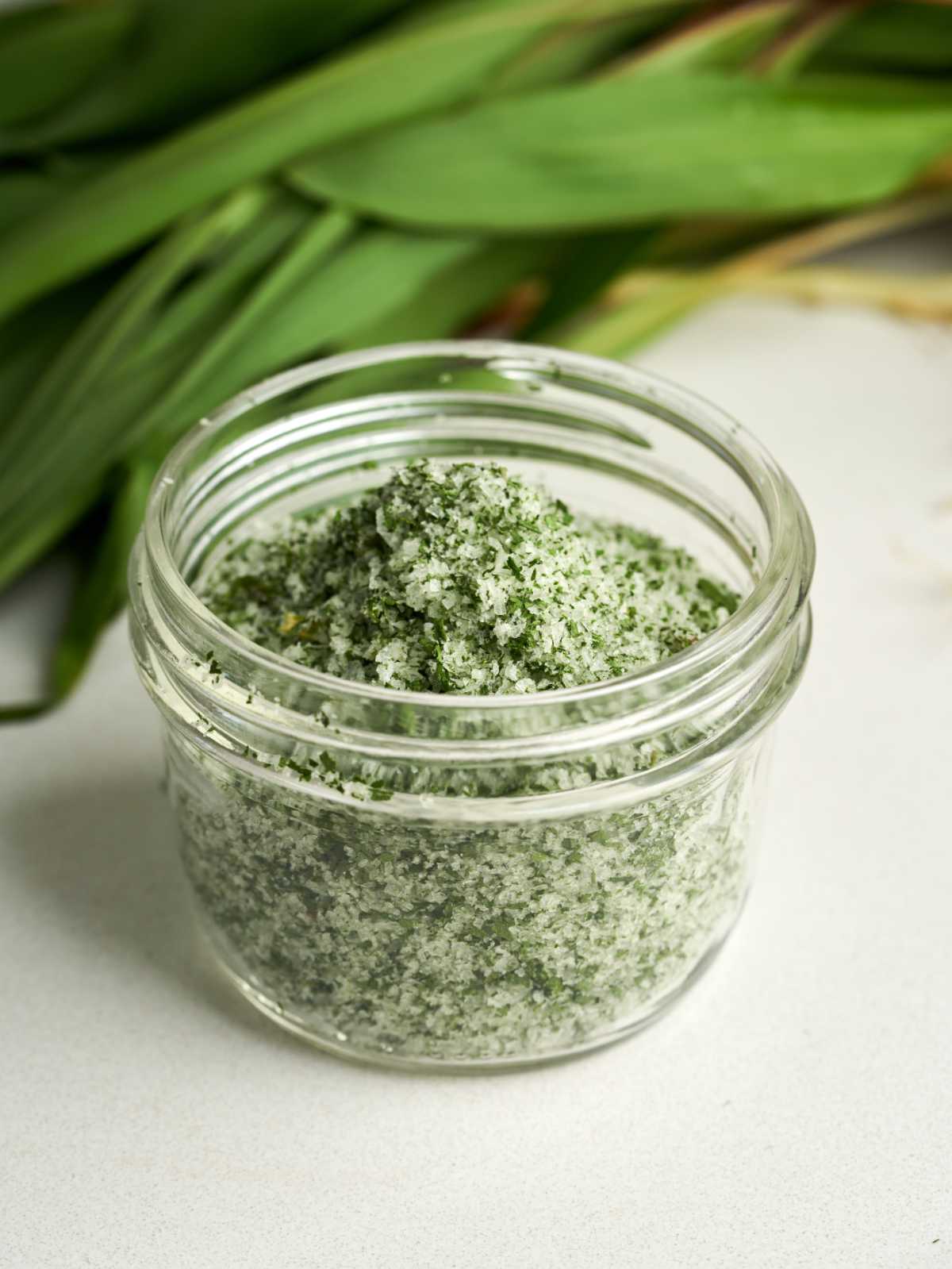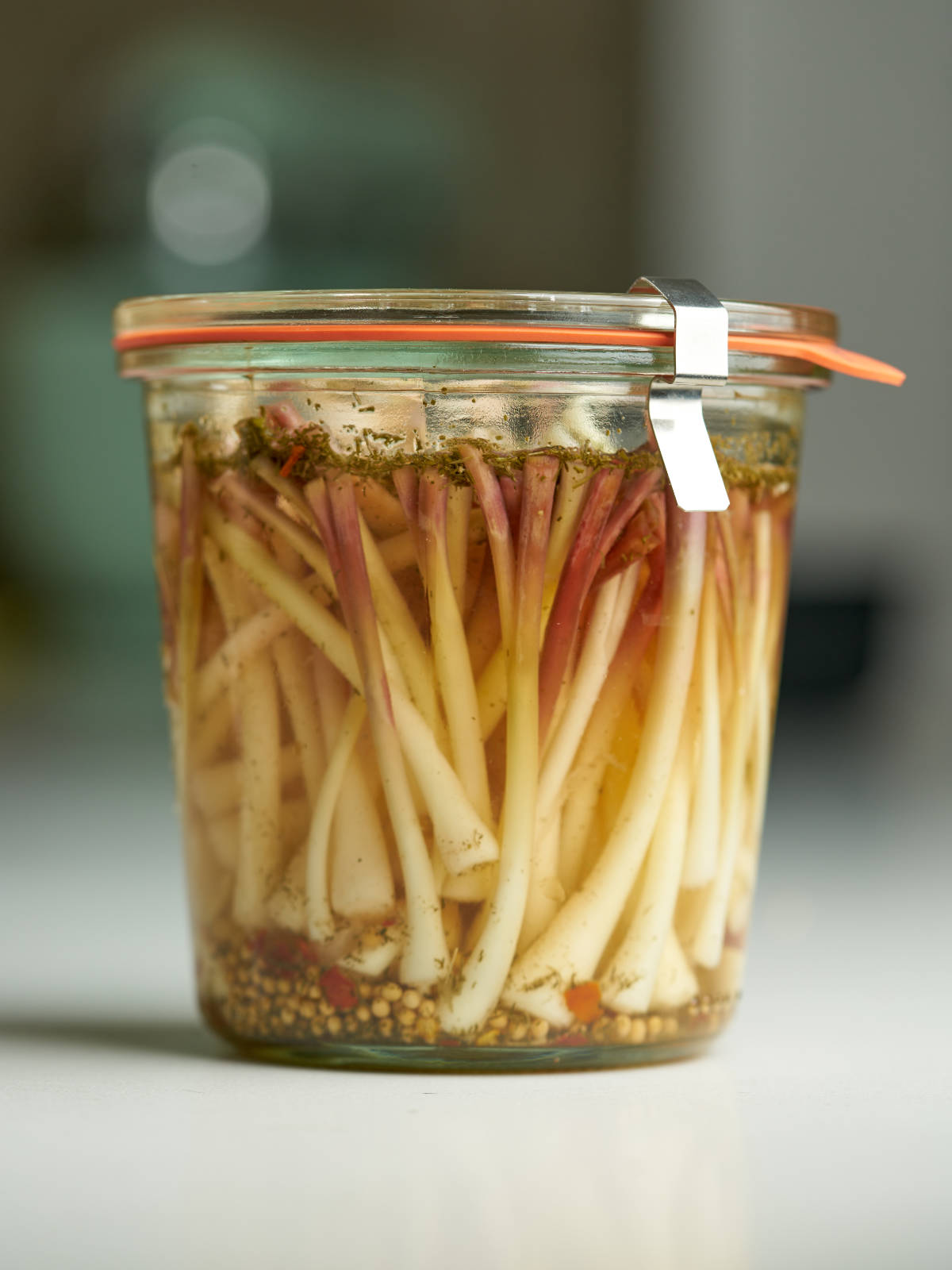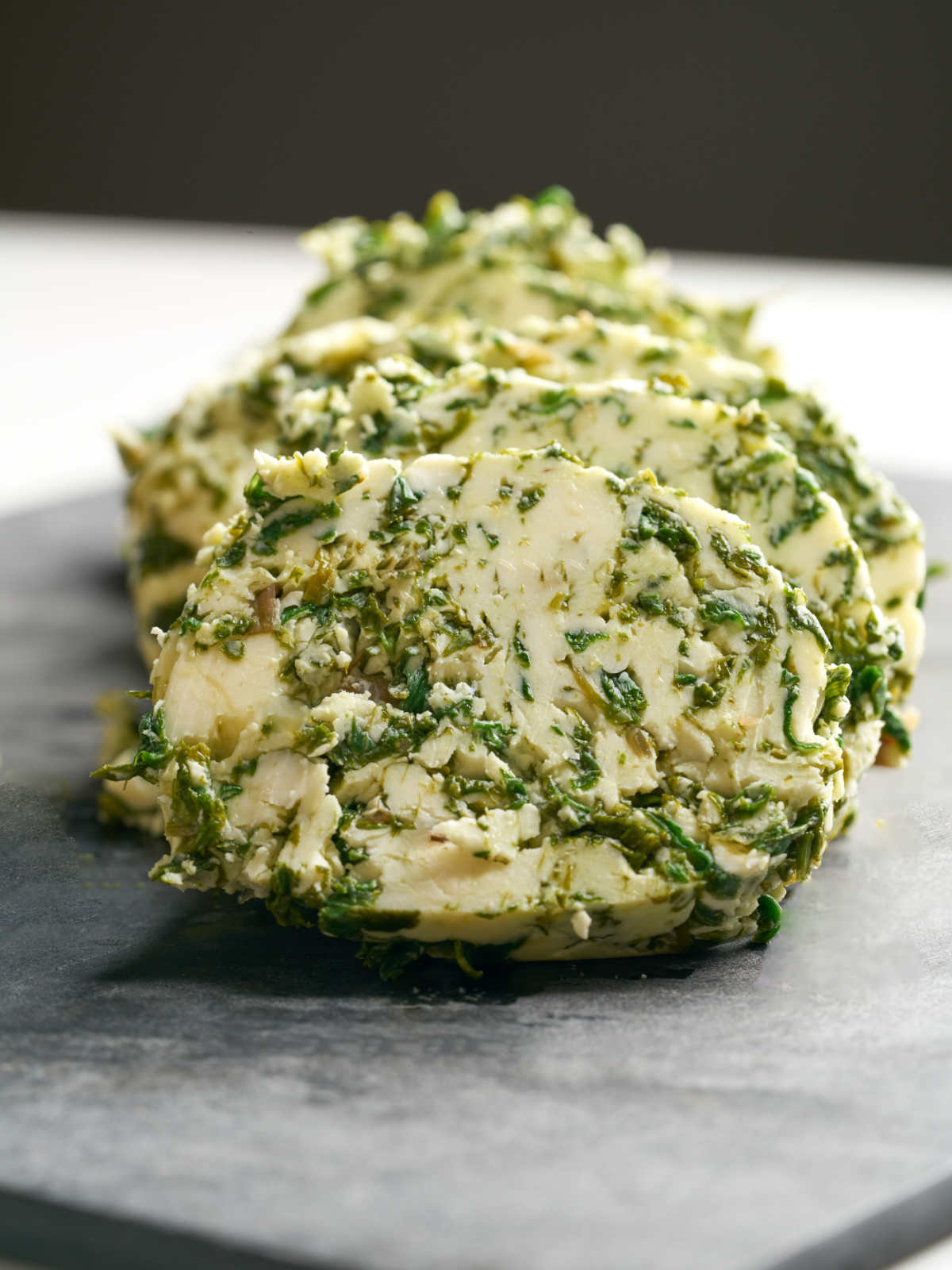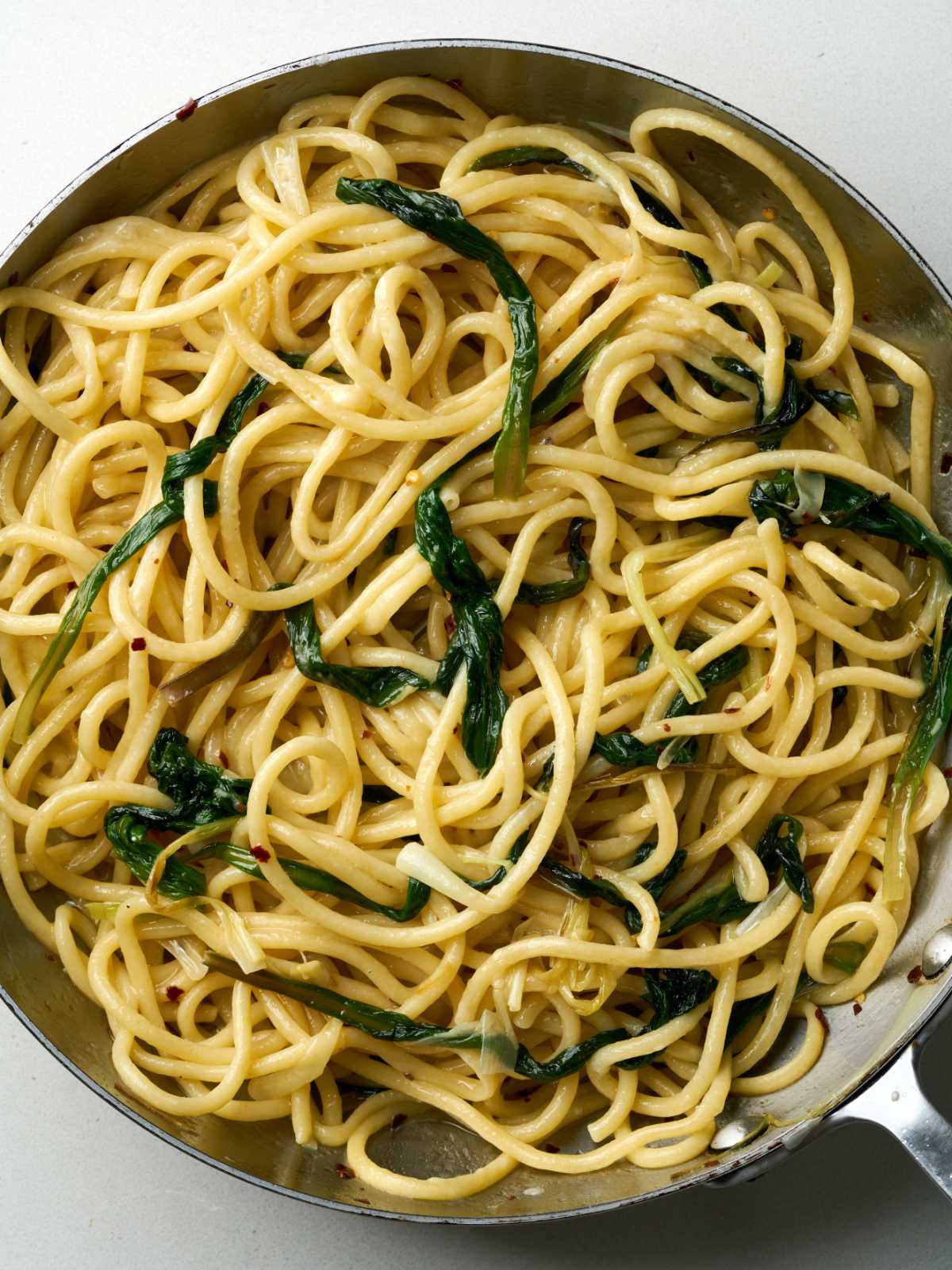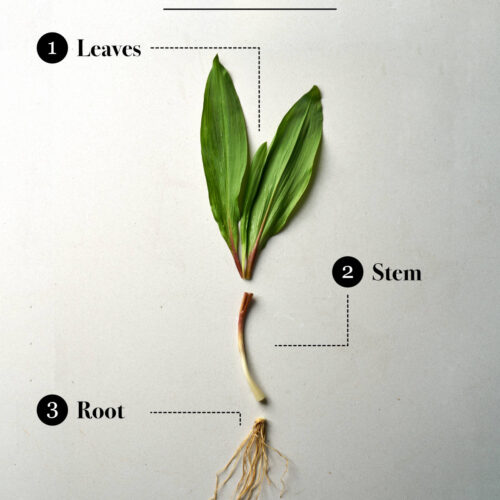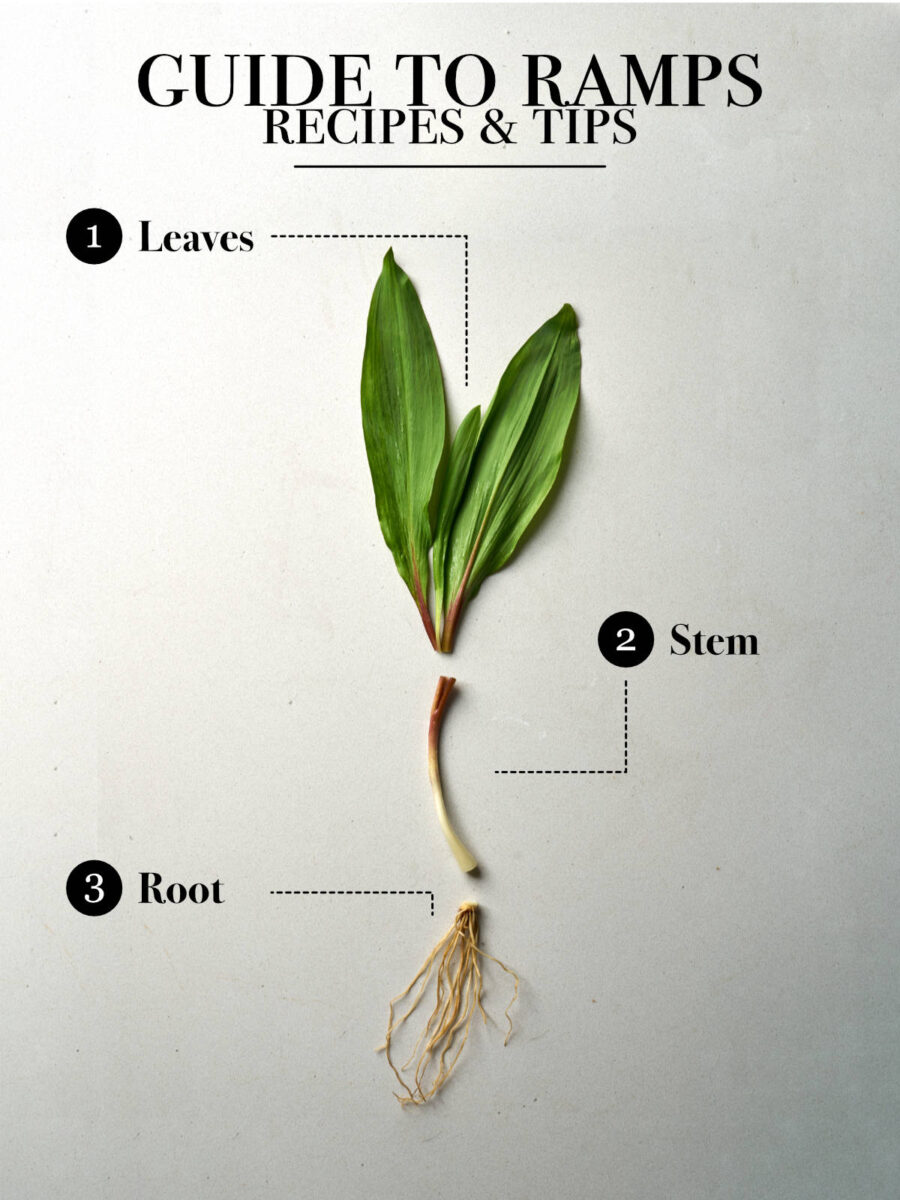This is a quick and easy guide to finding and preparing ramps, plus recipes to help you preserve and enjoy your ramps for longer. There’s a good reason that home cooks become excited when it’s ramp season! Ramps are an incredible ingredient with bold, garlicky flavor available for only a few weeks each year. Let’s make the most of them.
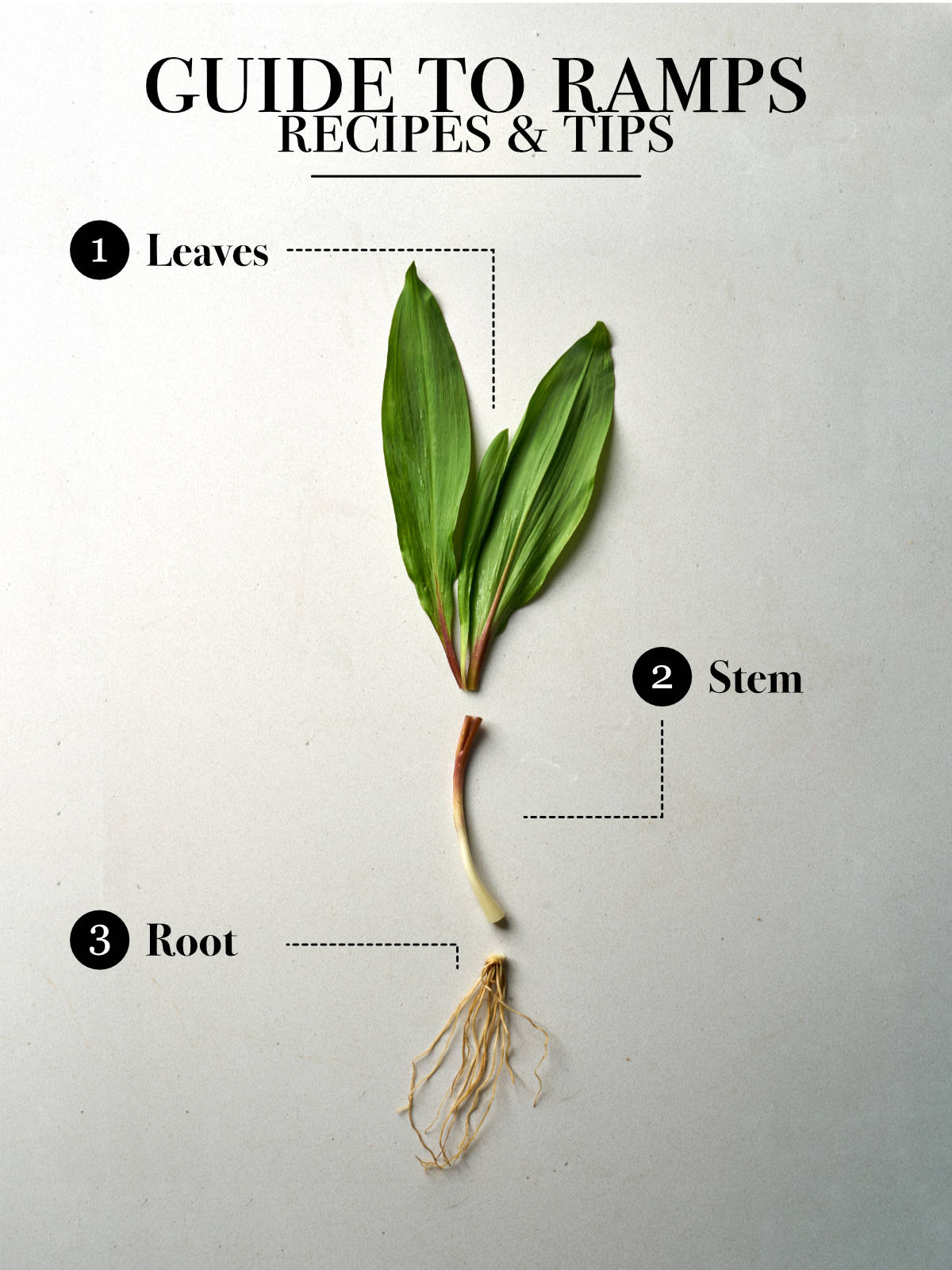
🌱 What Are Ramps?
Ramps are a vegetable in the allium family alongside onions, garlic, leeks, and chives. They are sometimes called wild leeks. They are small with a white stem and bulb that turns into a bright green leaf. They have a reddish hue at the base of the leaf.
🍴 What Do They Taste Like?
As you might suspect due to their close relation to garlic and onion, ramps have a savory, garlicky flavor with a distinct bold pungency. The initial bite gives way to a mild earthy flavor like wild mushrooms. You can eat the leaves and stems, though each have a slightly different flavor, making them more suited to different recipes. The leaves make an amazing ramp pesto, while the stems and bulbs are best for ramp pickles.
📍 Where to Find Ramps
Ramps are in short supply for two reasons. They grow in small numbers and are only in season for a limited time – early spring in April/May to early June.
I’ve found that they don’t tend to be stocked in regular supermarkets and grocery stores. Instead, I have had the best luck finding ramps at farmers’ markets in early spring. Make sure to go regularly, get there early, and ask vendors to get an idea if and when they are planning to sell ramps.
You can forage wild ramps, and many people do. Ramps can be found in early spring on forest floors across North America, especially under hardwood trees. There is useful information on where ramps grow in this USDA Agroforestry guide.
❗️ A Note on Safety ❗️
Ramps closely resemble several other dangerous and nonedible plants, such as the lily of the valley. If you intend to forage wild ramps, seek the advice of an experienced forager first or read a guide to foraging wild vegetables. There are some great resources on YouTube on how to identify ramps.
💚 How to Forage Ramps Sustainably
Ramps grow with their bulb and roots in the ground. If a forager pulls the entire ramp out of the earth – bulb, roots, and all – the ramp cannot regrow in that spot again. To ensure ramps can regrow and replenish themselves for the following year, foragers should:
- Only take 20-30% of the available ramps in any one spot
- Cut the ramps off at the mid-bulb point, so that some bulbs and roots are left intact
Ask about harvesting practices if you buy ramps from a third party like a farmers’ market. The demand for ramps is so high that overharvesting is an issue, so it benefits all to be mindful of this.
🧼 How to Clean and Prepare Ramps
Just like leeks, ramps can be covered in dirt and debris. You should fill a large bowl with cool water and submerge the ramps. Use your fingers to rub clean the stems, and move them around in the water to ensure each leaf has been cleaned. Remove them from the water, then dry them thoroughly with paper towels.
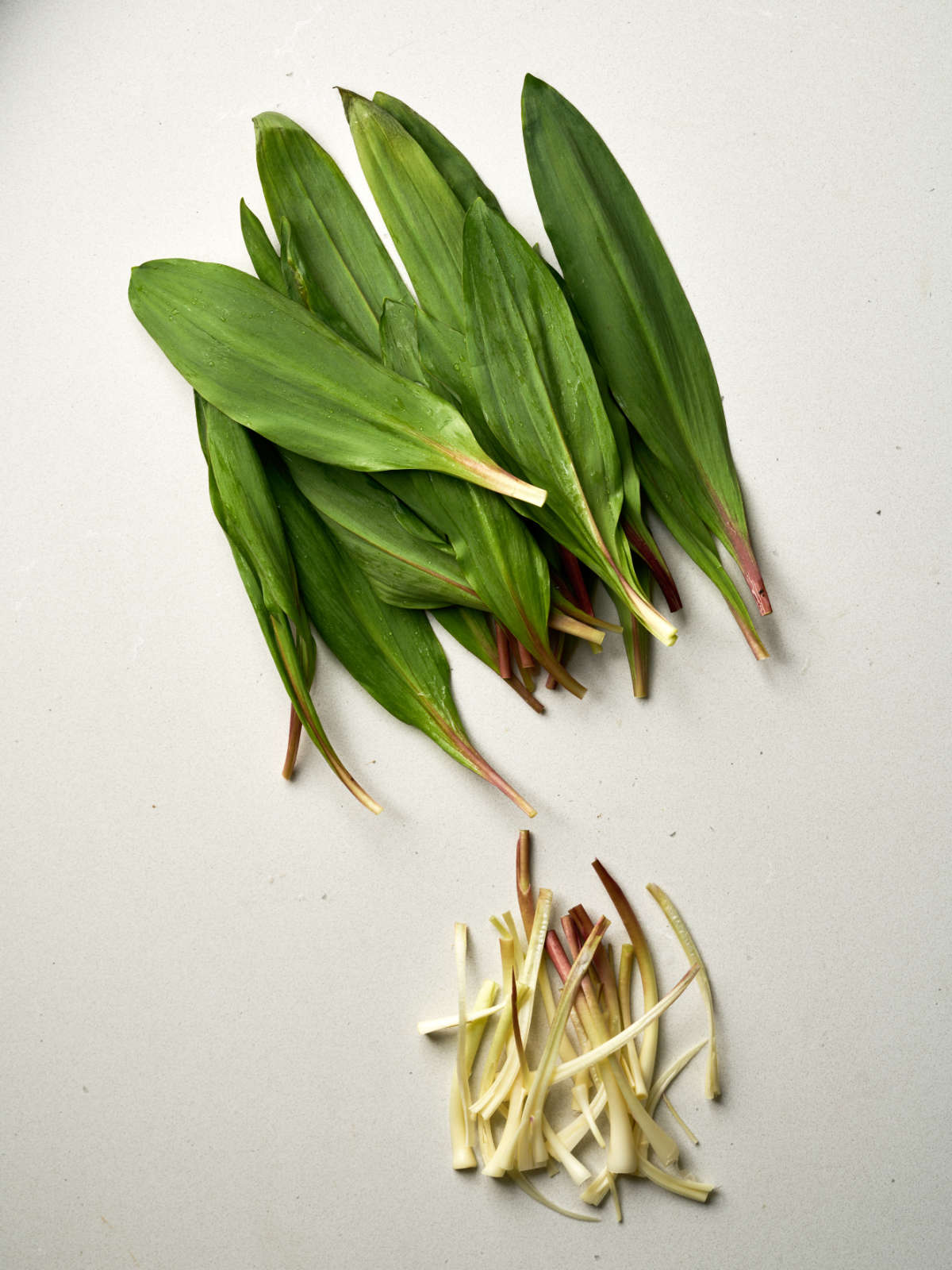
I like to separate the stems from the leaves as I know I will use them in different recipes. You can also store them whole. Wrap the ramps in a slightly damp paper towel, place them in a ziplock bag, and store them in the fridge. This method will keep them fresh for up to 5 days.
🗒 5 Creative Ways to Use Ramps
These are my favorite ways to eat and preserve ramps to enjoy them during and long months after ramp season is over.
